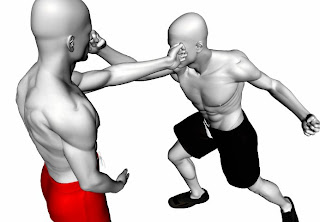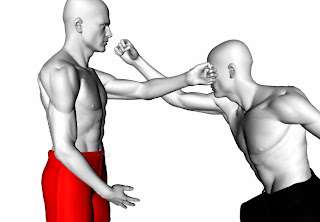
The Siu Nim Tao (or 1st Form) is the basic of the WingTshun.
Eventhough the form is taught at the very beginning of the WingTshun training, it is not only a sequence for beginners.
The concept collected in this sequence remain valid and are applied through all the programmes.
We will help you to capture each specific detail and you will understand the difference between repeating the movement just as a replay sequence or instead understanding the meaning behind.
As in most of the WingTshun programmes, what the eyes capture of a sequence do not contain all the informations needed to reproduce properly the movements.
INFO:
I collected a detailed description of the Siu Nim Tao in my new book published on LuLu, "Make the Most of - Your WingTshun - The Siu Nim Tao".
Here you will find also a new book on the concept of the "Pressure".
Have a look at FAQ on Wing Chun,where I am collecting the most recurring topics. Please refer to FAQ-Wing-Chun.
1st Form - Siu Nim Tao - sequence #001
CHAIN PUNCHES, WHY?

Overview
I decided to write this guide because when I started to learn WingTshun, twelve years ago, at that time it was not easy to find documentations about this particular Kung Fu style and still today most of the topics that I am going to face in these publications are missing. I thought that as a beginner as well as an advanced user, you may have some questions, as I had in the past, so this series will give you another tool to deepen your learning path. In this book I will refer to this system with the name of “Wing Tshun” (WT) just to use a school independent name. Please note that considering all the schools and the countries in which this system is taught, you may find WT written as Wing Tchun, Wing Chun, Wing Tsun, or Ving Tsun etc. basically the approach varies slightly and the name is only linked to a specific teaching organization. The chosen organization usually bring specific name to the positions, the Forms and the programs but the core of WT remains the same.
Exercise 0001
Definition: the Median line is the virtual line that links your body to the one of your opponent. Legs and arms have two distinct and parallel lines: The Arms use as a reference a line that links the chests and the legs use a line that passes through the knees.
If you control the Median Line (ML) in the WT, you control your opponent. Ok, wonderful, but how do I use it? Let’s have a look at this typical sequence:
Situation: Mr. X is moving towards you to punch you with the right arm.
Before to start: In WT usually the way to defend/attack can be inside or outside the aggressor’s guard. This exercise will focus on the inside attack since it is easier and you will not need to know the WT X steps.
Remember to rotate your chest in order always to face the Mr.X´s chest. Note that Mr.X moved from an area of No Danger (further than the Long Distance) to an area of Extreme danger, the Medium distance.
In a street fight it is very easy to lose the control of the long distance since attacks come unexpected.
Mr. X wants to hit the face of Mr. WT; we assume that Mr. X is stronger than Mr. WT.
WT can defend from this attack in many ways depending if you anticipate the aggressor (working on the long distance) or if you wait until Mr. X is in Medium distance.
The way to defend is the one described in the chapter 1 – The Median Line. The pressure of Mr. X is redirect by passing inside his guard. The WT’s left arm passes internally towards the Mr. X’s throat and the WT’s left elbow points horizontally on the left once the arm is stretched forward (Fig. 4.4 -4.5).
The fig. 4.5 also describes another important concept: the punch in WT is oriented according to the aggressor’s attack. WT must always follow the triangle shape in order to cover with the arms the two sides of the shape (Fig. 4.6). The fist always aim to the aggressor body, if no arms is met during its run, then the WT’s guard is secure.
After the first fist WT can continue his attack executing the chained punch sequence, fig. 4.6 describes this concept.
- never use the same figure for both arms at the same time
- the triangle is oriented according to the aggressor
- the wrist is always on the top of the triangle
- the elbow is oriented according to the position of the aggressor’s arm
- the WT’s arm shall be shaped to design a triangle (fist on the top and forearm on the side)
- The punch must be fluid, it does not matter the strength, but the speed and the direct line that the fist walk on
UNDER COSTRUCTION
I decided to gather here what I have learnt and to organise some materials on which I was training and teaching during the past years.








